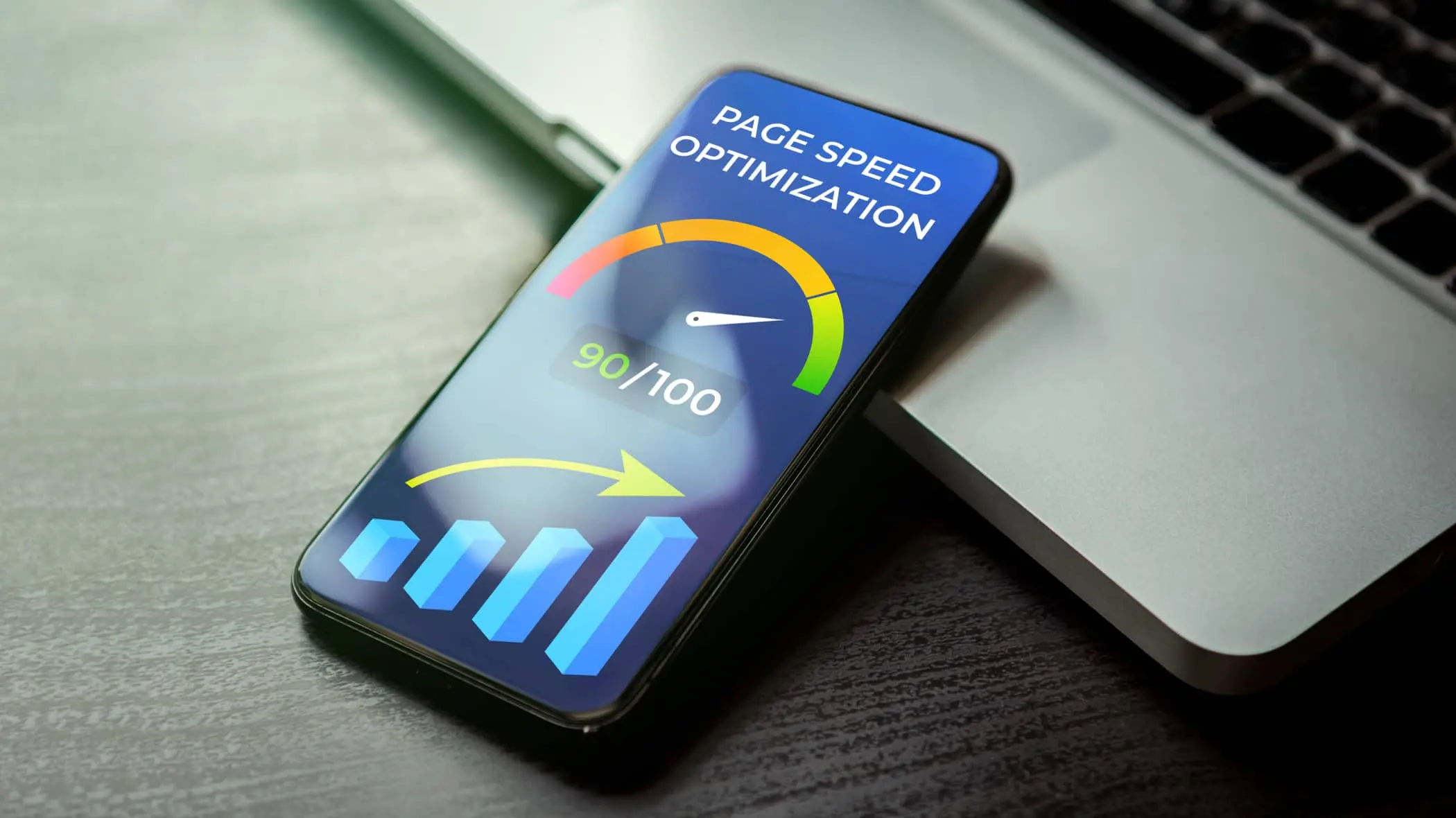In the digital age, mobile devices have become a primary tool for accessing the internet. This shift in user behavior has made Mobile SEO a critical aspect of any successful digital marketing strategy. But what exactly is SEO for mobile? It’s the practice of optimizing your website for mobile devices. This includes ensuring your site is responsive, loads quickly and provides a seamless user experience on smaller screens.
In this comprehensive guide, we’ll delve into the world of Mobile SEO and AMP SEO.
Whether you’re a website owner, a digital marketer, or an SEO specialist, this guide will equip you with the knowledge and strategies you need to dominate mobile search.
Understanding SEO for Mobile and Its Importance
Mobile SEO is a subset of SEO that focuses on optimizing websites for mobile devices.
Table of Contents
- 1Understanding SEO for Mobile and Its Importance
- 2Key Components of SEO for Mobile
- 3Advanced Mobile SEO Strategies
- 4Optimizing Your Content for AMP
- 5Measuring and Improving Your Mobile SEO
- 6Which is the best practice for mobile SEO?
- 7What are the unique considerations for mobile SEO?
- 8Key Considerations for AMP Implementation
- 9How does SEO work for mobile apps?
- 10Conclusion and Future of Mobile SEO
It’s not just about making your site look good on a smaller screen.

It’s about ensuring that your site is fully functional, easy to navigate, and provides a positive user experience on mobile.
Why is this so important? Here are a few reasons:
The Rise of Mobile Traffic and User Behavior
The rise of mobile traffic is a global trend.
More people are using their smartphones to browse the web, shop online, and interact with digital content.
This shift in user behavior has significant implications for SEO.
It means that if your site isn’t optimized for mobile, you could be missing out on a significant amount of traffic and potential customers.
Google’s Mobile-First Indexing Explained
In 2018, Google announced a major change to its indexing process.
It switched to mobile-first indexing.
This means that Google now uses the mobile version of a website for indexing and ranking.

If your site isn’t mobile-friendly, it could negatively impact your search engine rankings.
In the next sections, we’ll explore how to optimize your site for mobile and take advantage of Google’s mobile-first indexing.
What is AMP?
AMP stands for Accelerated Mobile Pages. It’s an open-source framework specifically designed to create fast-loading webpages for mobile devices. In essence, it’s a streamlined version of a regular webpage.
Here’s a breakdown of AMP:
Purpose: Create mobile webpages that load super fast, enhancing user experience.
How it Works: AMP uses stripped-down HTML with custom components to ensure minimal resource usage and blazing-fast loading.
Benefits: Faster loading times lead to better SEO for mobile searches and a smoother user experience for visitors on phones and tablets.
Development: Google spearheaded AMP, but it’s now an open-source project. You can implement AMP through coding or plugins.
Key Components of SEO for Mobile
SEO for mobile involves several key components.
First, your website must be responsive.
This means it should automatically adjust to fit the screen size of the device it’s being viewed on.
Second, your site should load quickly on mobile devices.
Responsive Web Design vs. AMP: What You Need to Know
Responsive web design and AMP (Accelerated Mobile Pages) are two strategies for optimizing mobile websites.
Responsive design ensures your site looks good on any device, adjusting layout based on screen size.
AMP, on the other hand, is a Google-backed project designed to make mobile pages load faster.
Here are some key differences:
Page Speed Optimization for Mobile

Page speed is a critical factor in mobile SEO.
Slow-loading pages can frustrate users and lead to higher bounce rates.
Google also considers page speed in its ranking algorithm.
To optimize your mobile page speed, consider strategies like compressing images, minifying code, and leveraging browser caching.
Mobile User Experience and Design Considerations
User experience (UX) is another crucial aspect of mobile SEO.
A mobile-friendly site should be easy to navigate, with clear, concise content and intuitive design.
Avoid pop-ups and interstitials that can disrupt the user experience.
Also, ensure that clickable elements are large enough for mobile users and that your site is accessible for all users.
Remember, a positive mobile UX can lead to higher engagement, lower bounce rates, and improved SEO.
Advanced Mobile SEO Strategies
Beyond the basics, there are advanced strategies to boost your mobile SEO.
These include leveraging AMP, optimizing for local search, and considering voice search.
Each of these strategies can help you reach more mobile users and improve your search rankings.
Let’s dive deeper into each of these strategies.
Leveraging AMP for Enhanced SEO for mobile
AMP can significantly improve your SEO for mobile.
These pages load faster, providing a better user experience.

Google often highlights AMP pages in search results, which can increase visibility.
However, implementing AMP can be complex.
You’ll need to create a separate version of your pages that follow AMP’s strict guidelines.
Despite the challenges, the potential SEO benefits make AMP worth considering.
Local Search Optimization for Mobile
Local search is a key part of mobile SEO.
Many mobile searches are for local businesses or services.
To optimize for local search, ensure your business’s name, address, and phone number are consistent across all online platforms.
Also, consider using schema markup to provide more detailed local information to search engines.
Finally, encourage customers to leave reviews on platforms like Google My Business to boost your local search rankings.
Voice Search and Mobile SEO
Voice search is becoming increasingly popular, especially on mobile devices.
This trend has implications for mobile SEO.
Voice search queries are often longer and more conversational than typed queries.
To optimize for voice search, consider these longer, natural language queries in your keyword strategy.
Also, ensure your site is fast and mobile-friendly, as voice search devices often pull answers from top-ranking pages.
Optimizing Your Content for AMP
General best practices apply:
Start with Great Content: High-quality, informative content is essential regardless of AMP. Ensure your content is engaging and provides value to users.
Prioritize Mobile Friendliness: AMP is inherently mobile-focused, but it’s still good practice to ensure your content is formatted well and easy to read on smaller screens.
Specific optimizations for AMP:
Simplify Your Design: Complex layouts can slow down AMP pages. Opt for clean, clear designs with minimal elements.
Optimize Images: Images are often a significant source of bulk. Use efficient image formats (like WebP) and compress them effectively to reduce file size without sacrificing quality.
Minimize Javascript: AMP restricts custom Javascript to prioritize speed. If you rely heavily on Javascript for functionality, AMP might not be ideal. Consider alternative approaches or AMP-compatible libraries.
Use AMP Components: AMP provides a library of pre-built components for elements like ads, social media embeds, and forms. Utilize these components to ensure compatibility and functionality within the AMP framework.
Validate Your AMP: The AMP Project offers validation tools to check if your AMP pages adhere to the guidelines. Use these tools to identify and fix any errors before publishing.
Additional Tips:
Consider AMP Caching: AMP caching services can further improve loading speed by serving cached versions of your AMP pages.
Test Thoroughly: Test your AMP pages rigorously on various devices and browsers to ensure everything functions as intended.
Focus on User Experience: While speed is crucial, don’t compromise core user experience. If AMP limitations restrict essential functionalities, re-evaluate the need for AMP on that specific page.
By following these practices, you can optimize your content for AMP and take advantage of the speed benefits it offers for mobile users.
Measuring and Improving Your Mobile SEO
SEO for mobile is not a one-time task.
It requires ongoing monitoring and optimization.
You need to track your performance and make necessary adjustments.
This will ensure your mobile site remains optimized and competitive.
Tools and Metrics for Mobile SEO Success
Several tools can help you measure your mobile SEO success.
Google’s Mobile-Friendly Test and PageSpeed Insights are two such tools.

They can help you identify issues affecting your mobile site’s performance.
Metrics like mobile traffic, bounce rate, and conversion rate are also important.
These metrics can provide insights into your mobile site’s effectiveness and user experience.
Common Mobile SEO Mistakes to Avoid
Avoiding common mistakes is crucial for mobile SEO success.
One common mistake is not making your site mobile-friendly.
This can lead to poor user experience and lower search rankings.
Another mistake is slow page load speed.
Mobile users expect fast, seamless experiences.
Ignoring local search optimization is another common mistake.
Many mobile searches are local, so it’s important to optimize for this.
Finally, not considering voice search can be a missed opportunity.
As voice search grows, it’s becoming an increasingly important part of SEO for mobile.
Which is the best practice for mobile SEO?
Here are some of the benefits of a responsive website design for mobile search engine optimization:
Improved user experience: Users won’t have to pinch and zoom to read content or navigate your site, which can be frustrating and lead them to bounce away.
Faster loading times: Responsive websites are often designed to load faster on mobile devices, which is another important ranking factor for mobile SEO.
Better SEO: Google prioritizes mobile-friendly websites in its search results, so a responsive design can help you improve your mobile SEO ranking.
What are the unique considerations for mobile SEO?
Mobile SEO requires a different approach than traditional SEO because of the limitations and functionalities of mobile devices. Here are some unique considerations to keep in mind:
Screen Size: Mobile screens are significantly smaller than desktops. This means prioritizing clear, concise content, larger fonts, and easy-to-tap buttons.
Page Speed: Mobile users are more likely to abandon slow-loading sites. Optimizing images, minimizing code, and using efficient caching techniques are crucial for mobile SEO.
Local Search: People often use mobiles for on-the-go searches. Optimizing for local SEO with relevant keywords and complete Google My Business listings can boost your mobile visibility.
Voice Search: Voice search is becoming increasingly popular on mobiles. Consider incorporating long-tail, question-based keywords that people might use naturally when speaking.
Limited Attention Spans: Mobile users tend to scan content rather than read deeply. Structure your content with clear headings, bullet points, and short paragraphs for easy readability.
Touch vs Click: Mobile users interact with the web through touch, not clicks. Make sure all buttons and links are large enough for easy tapping and avoid using elements that require hovering.
Reduced Complexity: Complex menus and navigation structures can be cumbersome on mobile. Prioritize a clear and simple website architecture with easy access to important information.
Key Considerations for AMP Implementation
Here are some key considerations for AMP implementation:
Benefits:
Speed: AMP’s primary advantage is creating blazing-fast loading times for mobile pages, which improves user experience and SEO.
SEO Boost: Faster loading times are a ranking factor in Google search, so AMP can potentially improve your mobile search visibility.
Improved User Engagement: By eliminating long waits, AMP can keep users engaged and reduce bounce rates.
Challenges:
Development Effort: Setting up AMP requires additional development work or using plugins, which can add complexity.
Limited Functionality: AMP restricts certain functionalities like custom Javascript, which might limit your page’s design or features.
Content Control: Some AMP components may require rewriting content, potentially affecting your original design or functionality.
Other Considerations:
Content Compatibility: Not all content types translate perfectly to AMP. Evaluate if AMP is suitable for all your important pages.
Analytics Tracking: Traditional analytics tools might not work seamlessly with AMP. You may need to set up AMP-specific analytics.
Testing and Monitoring: Thoroughly test your AMP pages to ensure functionality and user experience are optimal. Monitor performance to identify any issues.
Overall:
AMP can significantly improve mobile search engine optimization and user experience, but it’s not a one-size-fits-all solution. Weigh the benefits against the development effort and potential limitations before implementing AMP for your website.
How does SEO work for mobile apps?
SEO for mobile apps involves optimizing the visibility and ranking of mobile applications in app stores like Google Play Store and Apple App Store.
It includes keyword optimization in the app title, description, and metadata, encouraging positive reviews and ratings, increasing app downloads, and enhancing user engagement within the app.
Implementing deep linking, utilizing app indexing, and promoting the app through various channels are also essential for mobile app SEO success.
Conclusion and Future of Mobile SEO
SEO for mobile is no longer optional.
It’s a crucial part of any successful digital marketing strategy.
As mobile usage continues to grow, so does the importance of SEO.
Staying ahead requires continuous learning and adaptation.
The future of mobile search engine optimization will likely involve new technologies and user behaviors.
Voice search, AI, and mobile-first indexing are just a few examples.
By staying informed and adaptable, you can ensure your mobile SEO strategy remains effective.
Remember, the goal is not just to rank high, but to provide a great mobile experience.
Why is AMP Mobile SEO Important?
AMP Mobile SEO is important for several reasons:
Improved Mobile Speed: AMP websites load significantly faster on mobile devices, which is a crucial ranking factor for mobile search.
Enhanced User Experience: Faster loading times lead to a better user experience for mobile visitors, who are more likely to stay on your website and engage with your content.
Potential for Higher Rankings: While AMP isn't a direct ranking factor, Google prioritizes mobile-friendly websites and fast loading speeds. AMP can indirectly contribute to higher mobile search rankings.
Increased Visibility in Search Results: AMP pages may be displayed with a special AMP badge or carousel placement in search results, potentially increasing their visibility.
Overall, AMP Mobile SEO helps you deliver a faster and more user-friendly experience for mobile visitors, which can lead to better search ranking, increased traffic, and improved engagement.
Does mobile optimization affect SEO?
Yes, mobile optimization absolutely affects SEO. Here's why:
Mobile-First Indexing: Google primarily uses the mobile version of your website for indexing and ranking, even for desktop searches. So, if your website isn't mobile-friendly, it can negatively impact your overall SEO performance.
Mobile User Experience: Most internet users access the web through mobile devices. If your website is slow, clunky, or difficult to navigate on mobile, it will lead to a poor user experience. Google prioritizes websites that offer a good user experience, including on mobile devices.
Mobile Speed as Ranking Factor: Website loading speed is a crucial factor in Google's search engine ranking algorithm. Since mobile users are more likely to abandon slow websites, having a mobile-optimized website that loads quickly can improve your ranking in mobile search results.
Therefore, mobile optimization is no longer optional for SEO success. By ensuring your website offers a seamless and fast experience on mobile devices, you improve your overall SEO performance and reach a wider audience.
Does SEO matter for app?
Yes, SEO can be important for apps, even though they aren't websites in the traditional sense. Here's why:
App Store & Google Play Discovery: Both app stores rely heavily on keyword searches for users to discover new apps. Optimizing your app title, description, and other metadata with relevant keywords can significantly impact how easily users find your app. This process is known as App Store Optimization (ASO).
Organic Search Traffic: While less common, users may also search for apps directly using search engines like Google. Optimizing your app listing and website content with relevant keywords can help your app appear in these search results and drive organic downloads.
Increased Visibility & Brand Awareness: Strong SEO practices, including ASO, can improve your app's visibility within app stores and search results. This increased visibility leads to more brand awareness and potentially more downloads.
SEO and ASO work together: Many SEO practices for websites can be adapted for ASO within app stores. By focusing on keyword research, clear and compelling descriptions, and user reviews, you can improve your app's discoverability in both app stores and search engines.
What is the difference between desktop SEO and mobile SEO?
Here's a breakdown of the key differences between desktop SEO and mobile SEO:
Focus:
Desktop SEO: Optimizes websites for larger screens and traditional desktop browsing experiences.
Mobile SEO: Optimizes websites for smaller mobile screens, touch navigation, and faster loading times crucial for mobile users.
Technical Considerations:
Desktop SEO: Less emphasis on page speed as desktop connections are generally faster.
Mobile SEO: Prioritizes fast loading times as mobile data connections can be slower and users are more likely to abandon slow websites.
User Behavior:
Desktop SEO: Users may spend more time browsing and consuming content on desktops.
Mobile SEO: Mobile users typically have shorter attention spans and are more likely to scan content and prioritize quick actions.
Content & Design:
Desktop SEO: Content can be more complex and structured for desktop reading habits.
Mobile SEO: Content needs to be concise, easy to read on small screens, and formatted for easy navigation with touchscreens.
Search Results:
Desktop SEO: More screen space allows for displaying more information in search results.
Mobile SEO: Less screen space means search results are condensed, prioritizing titles and snippets for quick browsing.
Overall:
Desktop SEO: Focuses on providing a comprehensive and informative user experience.
Mobile SEO: Prioritizes a fast, user-friendly experience with easily accessible information for on-the-go users.
Both desktop SEO and mobile SEO are crucial for website success in today's world. By understanding these differences and implementing targeted optimization strategies, you can ensure your website reaches a wider audience and provides a positive user experience across all devices.
Is AMP still relevant in SEO?
The relevance of AMP for SEO is a bit of a gray area. Here's a breakdown:
Not a direct ranking factor: Google has confirmed that AMP itself isn't a direct factor influencing search ranking.
Mobile Speed Matters: However, mobile page speed is a crucial ranking factor. AMP excels at delivering faster loading times on mobile devices.
Indirect Benefits: By using AMP, you can significantly improve mobile website speed, which can indirectly contribute to higher mobile search rankings.
Potential for Increased Visibility: AMP pages may be displayed with a special AMP badge or carousel placement in search results, potentially increasing their visibility.
So, is AMP still relevant?
For pure SEO benefits: Maybe not as critical as it once was.
For mobile user experience and speed: Absolutely relevant.
For specific content types (news): AMP may still be valuable for its potential visibility benefits in Google News.
Ultimately, the decision to use AMP depends on your website's goals and target audience. If mobile speed and user experience are priorities, AMP can still be a valuable tool. However, focusing on general mobile optimization can also achieve similar results.
